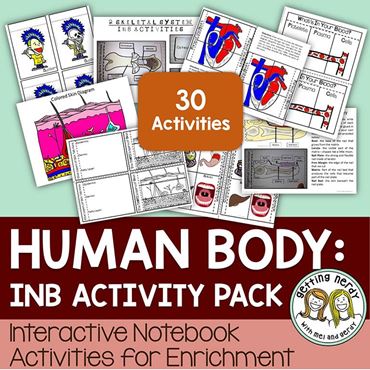
GN1042
Price: $19.11
Engage your students with Interactive Notebook Activity Packs. The Interactive Notebook flippers will have your kids “flipping” their way through learning all about science. Disseminate these lessons as you see fit whether creating a PowerPoint, in a class discussion or as small group activities. The possibilities are endless! Each Interactive Notebook Activity Pack includes directions for and photographs or examples of each activity, teacher notes and answer keys.
Includes 140+ PDF pages (30 activities), including differentiated black line and color templates, covering the following topics:
MS-LS1-1. Conduct an investigation to provide evidence that living things are made of cells; either one cell or many different numbers and types of cells
MS-LS1-2. Develop and use a model to describe the function of a cell as a whole and ways parts of cells contribute to the function.
MS-LS2-3. Develop a model to describe the cycling of matter and flow of energy among living and nonliving parts of an ecosystem.
MS-LS1-7. Develop a model to describe how food is rearranged through chemical reactions forming new molecules that support growth and/or release energy as this matter moves through an organism
MS-LS1-8. Gather and synthesize information that sensory receptors respond to stimuli by sending messages to the brain for immediate behavior or storage as memories.
MS-LS3-1. Develop and use a model to describe why structural changes to genes (mutations) located on chromosomes may affect proteins and may result in harmful, beneficial, or neutral effects to the structure and function of the organism.
MS-LS3-2. Develop and use a model to describe why asexual reproduction results in offspring with identical genetic information and sexual reproduction results in offspring with genetic variation.
MS-LS4-5. Gather and synthesize information about the technologies that have changed the way humans influence the inheritance of desired traits in organisms.